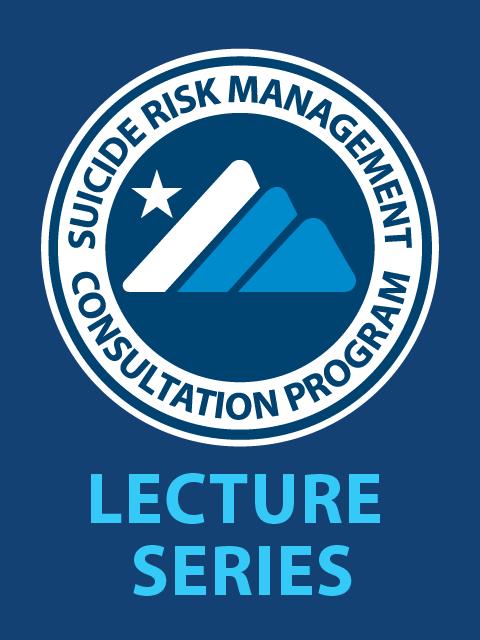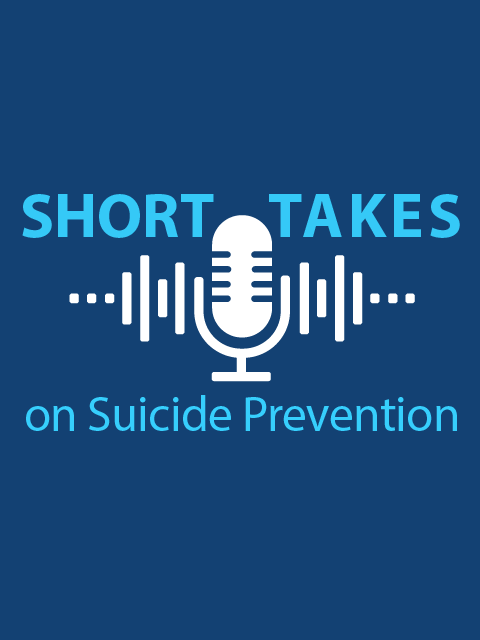21: Lethal Means Safety
Risk Management and Treatment » Community-Based Interventions
21: Lethal Means Safety
We suggest reducing access to lethal means to reduce the risk of suicide by firearms, jumping or medication overdose.
Strength:
Weak for
Category:
ReviewedNew-replaced
Grades and Definitions
- Strong for
- or "We recommend offering this option …"
- Weak for
- or "We suggest offering this option …"
- No recommendation
- or "There is insufficient evidence …"
- Weak against
- or "We suggest not offering this option …"
- Strong against
- or "We recommend against offering this option …"
Categories and Definitions |
||
|---|---|---|
| Evidence Reviewed* | Recommendation Category* | Definition* |
| Reviewed | New-added | New recommendation following review of the evidence |
| New-replaced | Recommendation from previous CPG that has been carried over to the updated CPG that has been changed following review of the evidence | |
| Not changed | Recommendation from previous CPG that has been carried forward to the updated CPG where the evidence has been reviewed but the recommendation is not changed | |
| Amended | Recommendation from the previous CPG that has been carried forward to the updated CPG where the evidence has been reviewed and a minor amendment has been made | |
| Deleted | Recommendation from the previous CPG that has been removed based on review of the evidence | |
| Not reviewed | Not changed | Recommendation from previous CPG that has been carried forward to the updated CPG, but for which the evidence has not been reviewed |
| Amended | Recommendation from the previous CPG that has been carried forward to the updated CPG where the evidence has not been reviewed and a minor amendment has been made | |
| Deleted | Recommendation from the previous CPG that has been removed because it was deemed out of scope for the updated CPG | |
| *Adapted from the NICE guideline manual (2012): The guidelines manual. London: National Institute for Health and Care Excellence;2012. and Martinez Garcia L, McFarlane E, Barnes S, Sanabria AJ, Alonso-Coello P, Alderson P. Updated recommendations: An assessment of NICE clinical guidelines. Implement Sci. 2014;9:72. | ||
Recommendation Resources
Reducing access to lethal means can prevent suicide by firearms, jumping, and medication overdose. Lethal means are objects (e.g., medications, firearms, sharp instruments) that can be used to inflict self-directed violence (SDV). Lethal Means Safety (LMS) is an intentional, voluntary practice to reduce one's suicide risk by limiting access to those lethal means. While firearms account for approximately half of suicide deaths in the United States, they account for over 70% of suicide deaths among Veterans. VA has developed extensive LMS training to support providers in implementing this in their clinical practice.
Webinars
This section includes recommended webinars about Lethal Means Safety.
-
 A Patient-Centered Approach to Lethal Means Safety with Veterans Presented by Dr. Ryan Holliday & Dr. Lindsey Monteith
A Patient-Centered Approach to Lethal Means Safety with Veterans Presented by Dr. Ryan Holliday & Dr. Lindsey Monteith -
 Community Prevention Progress: A Look at Governor's Challenge Efforts to Educate Communities on Lethal Means Safety Presented by Cicely Burrows-McElwain, Colonel Wanda Wright & Nicole Gore
Community Prevention Progress: A Look at Governor's Challenge Efforts to Educate Communities on Lethal Means Safety Presented by Cicely Burrows-McElwain, Colonel Wanda Wright & Nicole Gore -
 Firearm Acquisition & Ownership — Decision Making Within the Context of Injury Risk Presented by Joseph Simonetti, MD
Firearm Acquisition & Ownership — Decision Making Within the Context of Injury Risk Presented by Joseph Simonetti, MD -
 Partnering with Firearm Retailers to Promote Temporary Out-of-Home Firearm Storage Presented by Gala True, PhD, Caleb Morse, and Joseph Constans, PhD
Partnering with Firearm Retailers to Promote Temporary Out-of-Home Firearm Storage Presented by Gala True, PhD, Caleb Morse, and Joseph Constans, PhD -
 Perspectives on Firearm-Related Conversations in Clinical Settings Presented by Dr. Joseph Simonetti
Perspectives on Firearm-Related Conversations in Clinical Settings Presented by Dr. Joseph Simonetti
Visual Abstracts
This section includes recommended visual abstracts about Lethal Means Safety.
- Firearm Safety as a Suicide Prevention Strategy Within Health Care Systems
-
Click/Tap for smaller image

Related publication: Promoting Firearm Safety as a Suicide Prevention Strategy Within Health Care Systems: Challenges and Recommendations — PubMed (nih.gov) -
Firearm Safety as a Suicide Prevention Strategy Within
Challenges
Health care systems face several challenges in implementing firearm-related lethal means safety suicide prevention interventions
- Training
- Refining Interventions
- Risk Perceptions
- Managing Sensitive Data
Recommendations
Develop a comprehensive and individualized set of evidence-informed lethal means safety training materials for clinical staff
Refining Interventions
Prioritize creation and implementation of firearm safety interventions tailored to diverse clinical settings and patient-risk groups
Risk Perceptions
Support research that improves understanding of firearm-related risk perceptions to inform messaging and communication strategies
Managing Sensitive Data
Establish and disseminate a plan outlining firearm-related data collection and management procedures
Further Suggestions
Develop infrastructure to facilitate stakeholder engagement to increases cultural competency and focus on patient needs
Support continued partnerships with firearm owners, gun shops, shooting ranges, and firearm advocacy organizations which could provide invaluable information for training and clinical materials
Simonetti, J., & Brenner L. (2019) Promoting firearm safety as a suicide preventions strategy within health care systems: challenges and recommendations. Psychiatry Online. https://doi.org/10.1176/appi.ps.201900286
- What are firearm storage practices among a nationally representative sample of US Veterans?
-
Click/Tap for smaller image

Related publication: Firearm Storage Practices Among American Veterans — PubMed (nih.gov) -
What are firearm storage practices among a nationally representative sample of US Veterans?
n=561 Veteran Firearm Owners
2015 National Firearms Survey22.5% store all firearms unloaded & locked
33.3% store at least one firearm loaded & unlocked
Strongly Agree/Agree that taking time to load or unlock gun is no good for self-protection
Unloaded & locked: 13.7%
Loaded & unlocked: 48.5%
Simonetti e al. (2018) American Journal of Preventative Medicine dot: 10.1016/j.amepre.2018.04.014
Websites
This section includes recommended websites about Lethal Means Safety.
 Lethal Means Safety Resources at VISN 19 MIRECC The VA Rocky Mountain MIRECC for Veteran Suicide Prevention developed a Lethal Means Safety website, which contains information regarding the evidence for LMS, tips on Lethal Means Safety Counseling, LMS recommendations, and associated resources.
Lethal Means Safety Resources at VISN 19 MIRECC The VA Rocky Mountain MIRECC for Veteran Suicide Prevention developed a Lethal Means Safety website, which contains information regarding the evidence for LMS, tips on Lethal Means Safety Counseling, LMS recommendations, and associated resources.  Keep It Secure This VA website provides information and a video related to Lethal Means Safety. It includes specific tips related to firearm and medication storage.
Keep It Secure This VA website provides information and a video related to Lethal Means Safety. It includes specific tips related to firearm and medication storage. -
 Means Matter Harvard's T.H. Chan School of Public Health developed the Means Matter website, which is another excellent source of information regarding LMS.
Means Matter Harvard's T.H. Chan School of Public Health developed the Means Matter website, which is another excellent source of information regarding LMS.
Podcasts
This section includes recommended podcast episodes about Lethal Means Safety.
- Short Takes on Suicide Prevention
-
 Promoting Lethal Means Safety to Prevent Veteran Suicide with Dr. Joseph Simonetti
Promoting Lethal Means Safety to Prevent Veteran Suicide with Dr. Joseph Simonetti -
 Talking to Patients about Firearm Safety with Dr. Marian (Emmy) Betz
Talking to Patients about Firearm Safety with Dr. Marian (Emmy) Betz -
 Why We Need to Talk Firearm Safety When We Talk about Suicide Prevention with Dr. Michael Anestis
Why We Need to Talk Firearm Safety When We Talk about Suicide Prevention with Dr. Michael Anestis
Articles
This section includes recommended articles about Lethal Means Safety.
- (2015). Suicide Rates and State Laws Regulating Access and Exposure to Handguns. American journal of public health, 105(10). 2049–2058. https://doi.org/10.2105/AJPH.2015.302753
- (2013). Means and capacity for suicidal behavior: a comparison of the ratio of suicide attempts and deaths by suicide in the US military and general population. Journal of affective disorders, 148(1). 42–47. https://doi.org/10.1016/j.jad.2012.11.045
- (2015). The Association Between State Laws Regulating Handgun Ownership and Statewide Suicide Rates. American journal of public health, 105(10). 2059–2067. https://doi.org/10.2105/AJPH.2014.302465
- (2014). The accessibility of firearms and risk for suicide and homicide victimization among household members: a systematic review and meta-analysis. Annals of internal medicine, 160(2). 101–110. https://doi.org/10.7326/M13-1301
- (2011). Impact of different pack sizes of paracetamol in the United Kingdom and Ireland on intentional overdoses: a comparative study. BMC public health, 11. 460. https://doi.org/10.1186/1471-2458-11-460
- (2013). Long term effect of reduced pack sizes of paracetamol on poisoning deaths and liver transplant activity in England and Wales: interrupted time series analyses. BMJ (Clinical research ed.), 346. f403. https://doi.org/10.1136/bmj.f403
- (2007). Firearm legislation reform in the European Union: impact on firearm availability, firearm suicide and homicide rates in Austria. The British journal of psychiatry: the journal of mental science, 191. 253–257. https://doi.org/10.1192/bjp.bp.106.032862
- (2009). Controlling firearms use in Australia: has the 1996 gun law reform produced the decrease in rates of suicide with this method?. Social psychiatry and psychiatric epidemiology, 44(4). 285–292. https://doi.org/10.1007/s00127-008-0435-9
- (2013). Firearms and suicide in the United States: is risk independent of underlying suicidal behavior?. American journal of epidemiology, 178(6). 946–955. https://doi.org/10.1093/aje/kwt197
- (2007). Interrupted time-series analysis of regulations to reduce paracetamol (acetaminophen) poisoning. PLoS medicine, 4(4). e105. https://doi.org/10.1371/journal.pmed.0040105
- (2020). Means restriction for the prevention of suicide by jumping. The Cochrane database of systematic reviews, 2(2). CD013543. https://doi.org/10.1002/14651858.CD013543
- (2020). The impact of gun violence restraining order laws in the US and firearm suicide among older adults: a longitudinal state-level analysis, 2012-2016. BMC public health, 20(1). 334. https://doi.org/10.1186/s12889-020-08462-6
- (2000). Suicide acts in 8 states: incidence and case fatality rates by demographics and method. American journal of public health, 90(12). 1885–1891. https://doi.org/10.2105/ajph.90.12.1885
- (2023). Handgun Divestment and Risk of Suicide. Epidemiology (Cambridge Mass.), 34(1). 99–106. https://doi.org/10.1097/EDE.0000000000001549
- (2016). Suicide prevention strategies revisited: 10-year systematic review. The lancet. Psychiatry, 3(7). 646–659. https://doi.org/10.1016/S2215-0366(16)30030-X




















